ANIMALS
18 Dogs Rescued from Brutal Conditions in Vietnamese Slaughterhouse
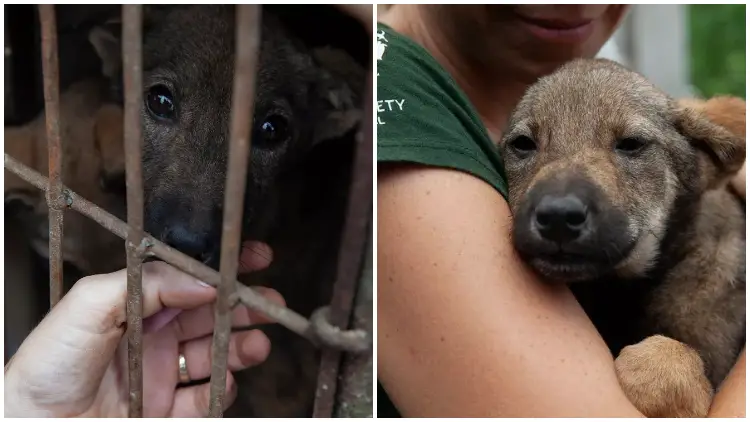
After Participating in Humane Society International’s Models for Change Program, Slaughterhouse Owner Commits to Shutting Down Dog Meat Business Responsible for Killing Dozens of Dogs Daily.
 Image source: CHAU DOAN/AP IMAGES FOR HSI
Image source: CHAU DOAN/AP IMAGES FOR HSI
Rescuers saved eighteen dogs from a slaughterhouse in Vietnam after the owner decided to give up the business and surrender the remaining canines at the facility.
In a statement released by Humane Society International (HSI), it was announced that they have assumed responsibility for the well-being of the 18 rescued dogs. The organization shared that Mr. Hiep, a 40-year-old resident of Thai Nguyen province in Vietnam, known for its dog meat industry, has made the decision to participate in Models for Change, an initiative by HSI aimed at supporting individuals in transitioning away from the dog meat trade.
Within the framework of the program, Mr. Hiep decided to permanently close down his business which had killed “10-15 dogs every day”, for the past five years, per the release. Humane Society International (HSI) and representatives from Vietnam’s Departments of Agriculture and Animal Health were present to provide support to Mr. Hiep during this transition. Currently, he is actively pursuing a transition from the dog meat industry to engaging in agricultural services.
In a heartfelt statement, the owner of the slaughterhouse expressed his deep realization that “in my heart that killing and eating dogs is wrong” and admitted that “it was becoming harder and harder for me to do it. I am convinced that being part of this trade was bringing my family bad karma, so I am relieved to work with HSI in Vietnam to end this chapter in my life and start afresh.”
 Image source: CHAU DOAN/AP IMAGES FOR HSI
Image source: CHAU DOAN/AP IMAGES FOR HSI
Upon HSI’s arrival to transfer Mr. Hiep’s 18 dogs to a dedicated animal rescue, their officials made a distressing discovery—several of the puppies were confined in cages, specifically intended for overfeeding to increase their weight for slaughter. Following HSI’s intervention and subsequent removal of the dogs from these enclosures, the canines received essential vaccinations against rabies and distemper, ensuring their health and well-being.
Following the rescue, HSI safely transported the dogs to temporary shelters and rehabilitation centers located at the Thai Nguyen University of Agriculture and Forestry, where they receive comprehensive medical attention and nurturing care. Once the canines have regained their health and found comfort, they will be made available for adoption, both within the local community and internationally.
 Image source: CHAU DOAN/AP IMAGES FOR HSI
Image source: CHAU DOAN/AP IMAGES FOR HSI
HSI’s Models for Change program has expanded to Vietnam, building upon its success in South Korea. The program was initiated in South Korea in 2015, leading to the closure of 17 dog meat farms and the rescue of 2,500 dogs over the years. Now, HSI aims to replicate this accomplishment in Vietnam through the Models for Change program.
The program provides support to slaughterhouse owners who opt to join, facilitating their transition into alternative ventures or industries.
Phuong Tham, the country director of Humane Society International (HSI) in Vietnam, expressed in a statement “We are very proud to bring our Models for Change program to Vietnam. The dog meat trade is not only unbelievably cruel but also poses a very grave risk to human health from the transmission of potentially lethal diseases like rabies.”
“Mr. Hiep is the first of what we hope will be many more people to leave this dangerous trade behind them, helping the government achieve its goal of eliminating human rabies deaths from dog interactions by 2030,” he added.
Source: People
ANIMALS
Amazing Video of Unseen Ocean Creatures in the Ningaloo Canyons

The Schmidt Ocean Institute recently explored the Ningaloo Canyons on the western coast of Australia using a robotic underwater vehicle called the ROV Sebastian. Check out the amazing video of what they discovered in the deep parts of the Indian Ocean.
More info: Youtube




ANIMALS
These Pics Are Art and the Artists Are Insects
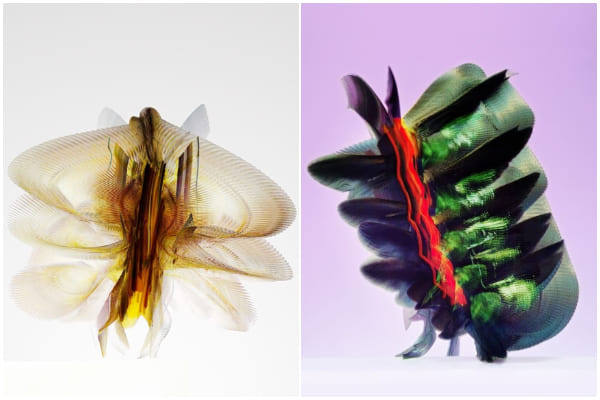
Flying insects move so quickly that they are hard to follow, but new technology and some smart ideas have helped Spanish photographer Xavi Bou do just that. After spending 10 years focusing on birds in flight for his Ornithographies project, he turned his attention to insects.
For Entomographies, he uses high-speed video footage taken by Adrian Smith, an insect expert at North Carolina State University, to study and record how insects move. Bou then picks multiple frames and combines them into single images that show the fast movements of one or more insects through space and time.
With Smith’s help, Bou has captured the aerial tricks of wasps, the jumps of leafhoppers, and the fluttering of butterflies in amazing detail. He hopes that by doing this, he can make people more aware of the decline in important insect populations around the world.
1. Zebra longwing
This butterfly, which is common in many areas of the Americas, really fits its name. It can fly very high with just a few flaps of its large wings.
 Image source: nationalgeographic
Image source: nationalgeographic
2. Two-lined spittlebug
This insect, which comes from the eastern United States, is often seen as a pest because it likes to eat grass. Its springy back legs can make it jump into the air like a rocket.
 Image source: nationalgeographic
Image source: nationalgeographic
3. Yellow-collared scape moth
Unlike most moths, this North American species flies during the day. Its shiny blue-black wings sparkle in the sunlight.
 Image source: nationalgeographic
Image source: nationalgeographic
4. Ailanthus webworm moths
These tropical moths have spread farther north in the U.S. Because of their larval host, the invasive tree of heaven, they are now one of the most common backyard moths in the country.
 Image source: nationalgeographic
Image source: nationalgeographic
5. Common stonefly
Mostly found in eastern North America, this insect starts its life as an underwater nymph in forested streams or rivers. Then it leaves the water, sheds its skin, and becomes an adult with wings.
 Image source: nationalgeographic
Image source: nationalgeographic
6. Green lacewings
Eighty-seven species of this insect have been found in the U.S. and Canada. Since they eat a lot of unwanted plant pests like aphids and mites, they are often used to naturally control these pests.
 Image source: nationalgeographic
Image source: nationalgeographic
7. Grapevine beetle
This insect, fittingly named, eats the leaves and fruit of grapevines, both wild and farmed, but it doesn’t do much damage to the plants. As a type of scarab beetle, it often flies in a curved path.
 Image source: nationalgeographic
Image source: nationalgeographic
8. Oak treehopper and green treehopper
Treehoppers are known for their uniquely shaped pronotum, the part behind their head, which often looks like plant parts to hide from predators. They can jump well thanks to special muscles.
 Image source: nationalgeographic
Image source: nationalgeographic
9. Banded orange
This brightly colored butterfly can be found from Mexico to Brazil. Before mating season, male butterflies look for mineral salts, sometimes even drinking salty fluids from the skin, eyes, and nostrils of other animals.
 Image source: nationalgeographic
Image source: nationalgeographic
10. Sapho longwing
Longwings can live for 6 to 7 months, longer than most butterflies. This type, found from Mexico to Ecuador, has shiny blue wings, which is why it’s also called the Sapphire longwing.
 Image source: nationalgeographic
Image source: nationalgeographic
ANIMALS
Eagle and Fox in an Epic Midair Battle Over a Rabbit, Were Captured by a Photographer

Wildlife photography often depends on the perfect combination of good timing and the right place.
That’s exactly what happened when Kevin Ebi, an experienced wildlife photographer, captured an incredible battle between a bald eagle and a red fox, both competing for a rabbit meal.
In a detailed blog post, Ebi shares the fascinating series of events that unfolded while he was photographing foxes in San Juan Island National Historical Park, located in Washington state.
Ebi noticed a lively group of eight fox kits as they began their hunting lessons. Suddenly, they spotted a rabbit, and a thrilling chase ensued. Eventually, one of the foxes emerged as the winner, proudly carrying the rabbit across the field.
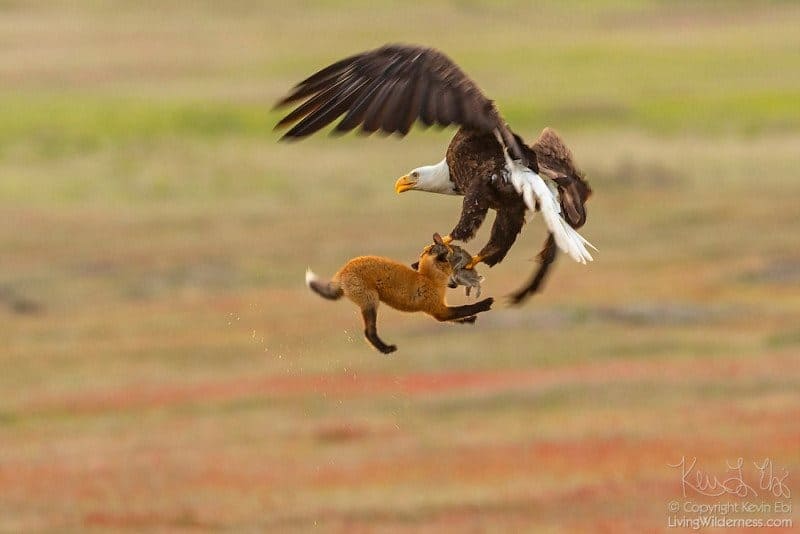 Image source: Kevin Ebi
Image source: Kevin Ebi
Ebi shares what happened at that moment: “As I followed the fox with my camera, a sudden bald eagle cry caught my attention. It was swiftly approaching, clearly aiming for the rabbit. I quickly focused on the fox, anticipating a quick turnover of events.”
To Ebi’s astonishment, instead of a quick surrender, the situation turned into a intense fight in the air.
The eagle used its power to lift the fox and rabbit high up in the sky. Even while airborne, the fox attempted to break free by swinging back and forth.
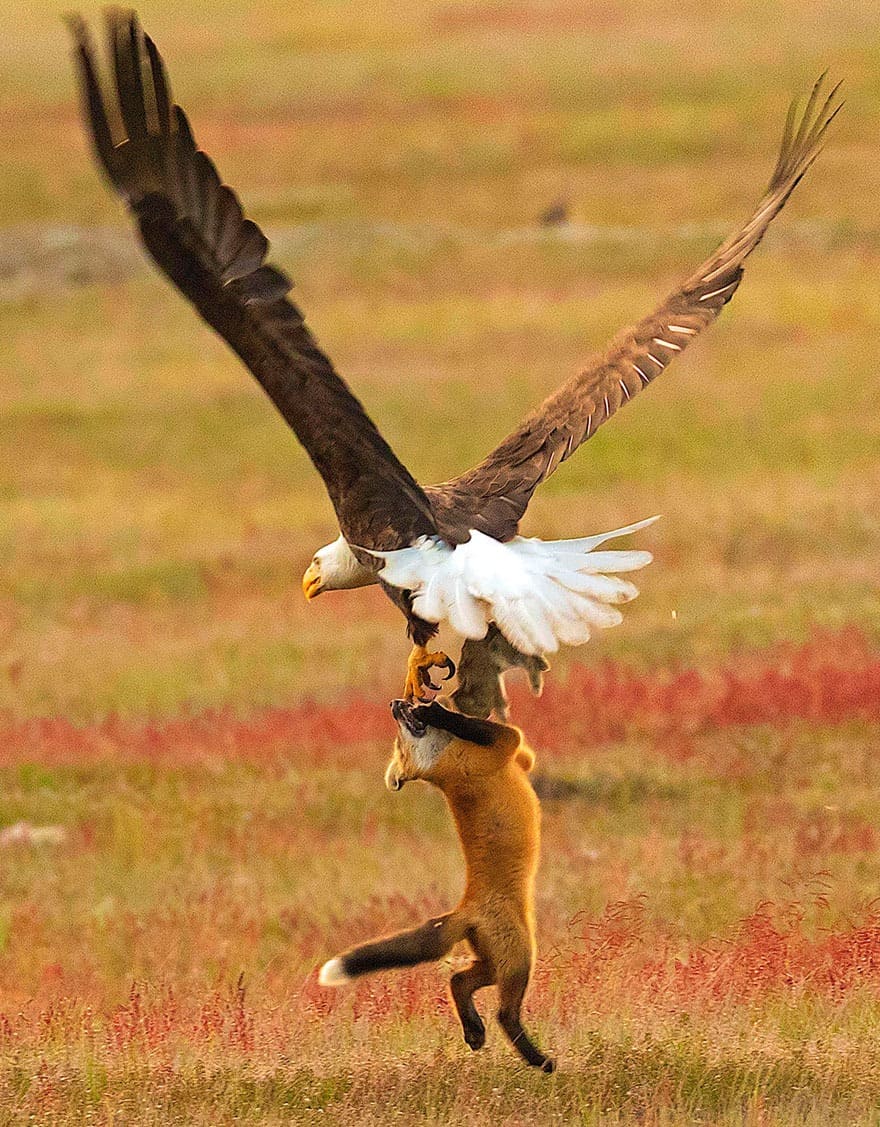 Image source: Kevin Ebi
Image source: Kevin Ebi
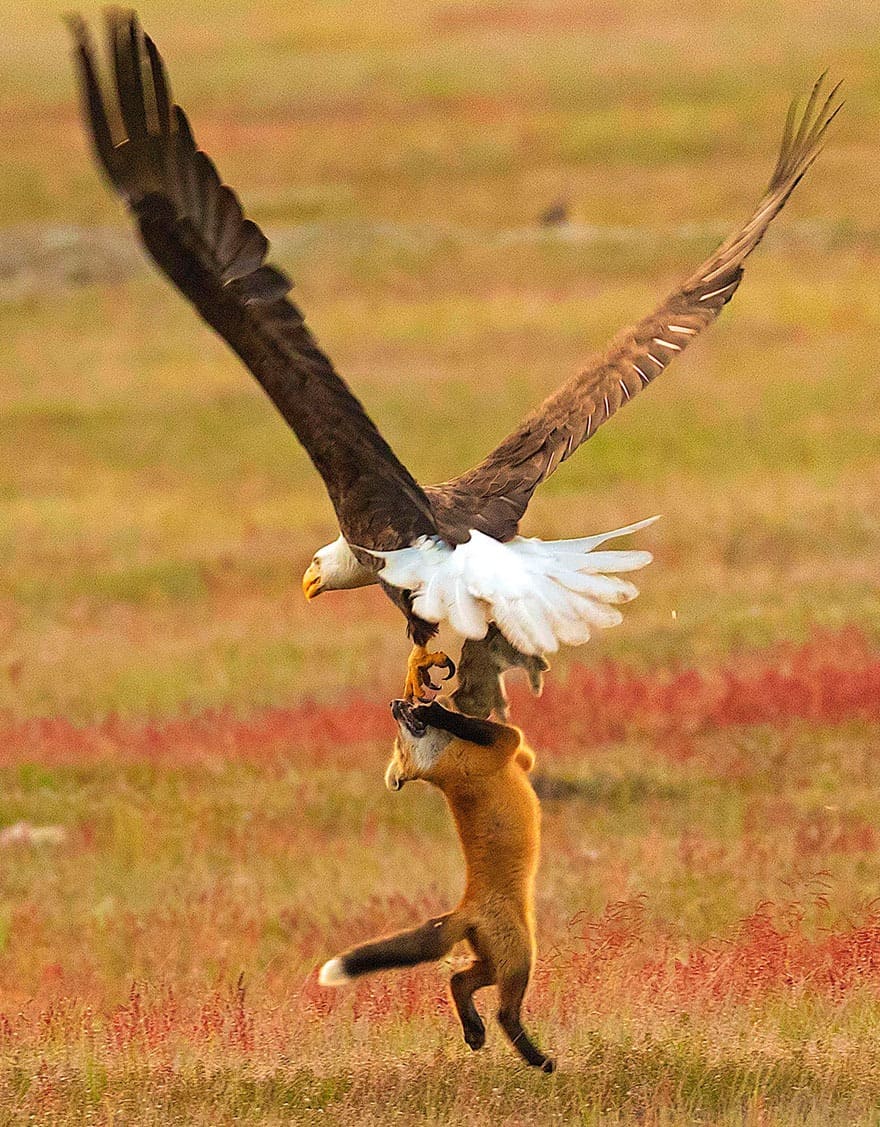 Image source: Kevin Ebi
Image source: Kevin Ebi
 Image source: Kevin Ebi
Image source: Kevin Ebi
In the end, the eagle moved the rabbit to its other claw, causing the fox to let go. The intense battle came to an end in less than 10 seconds.
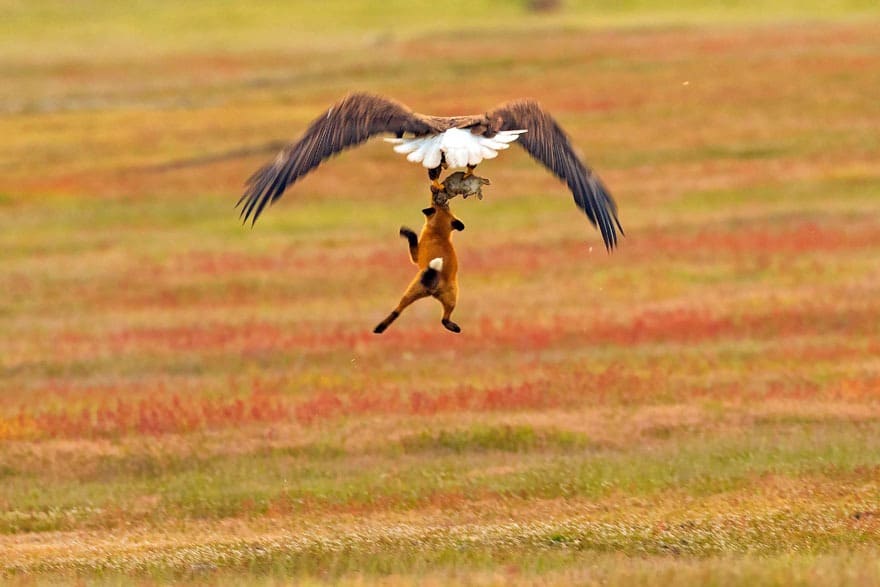 Image source: Kevin Ebi
Image source: Kevin Ebi
For those worried about the fox’s well-being after the fight, Ebi reassures that it was not injured. The fox swiftly bounced back from the encounter and resumed its playful behavior with the other young foxes, showing no visible wounds from the aerial clash.
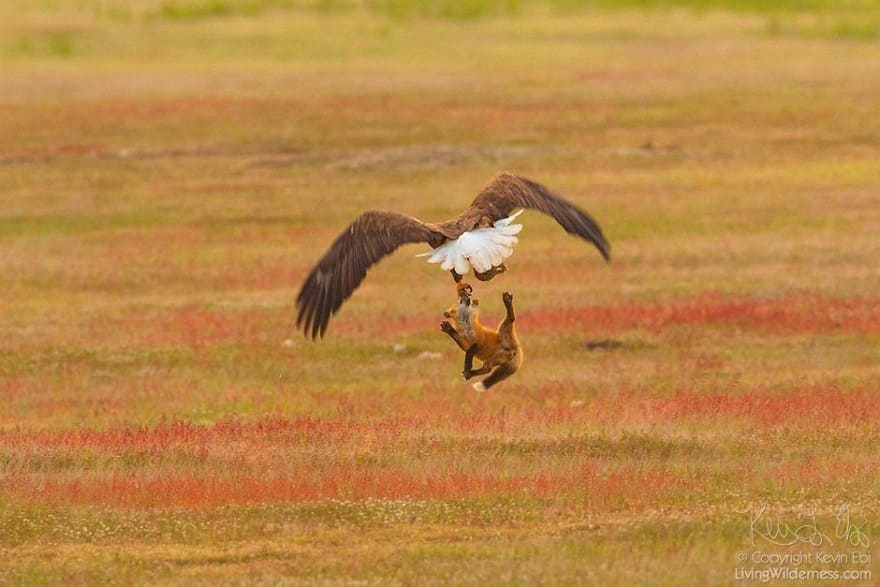 Image source: Kevin Ebi
Image source: Kevin Ebi
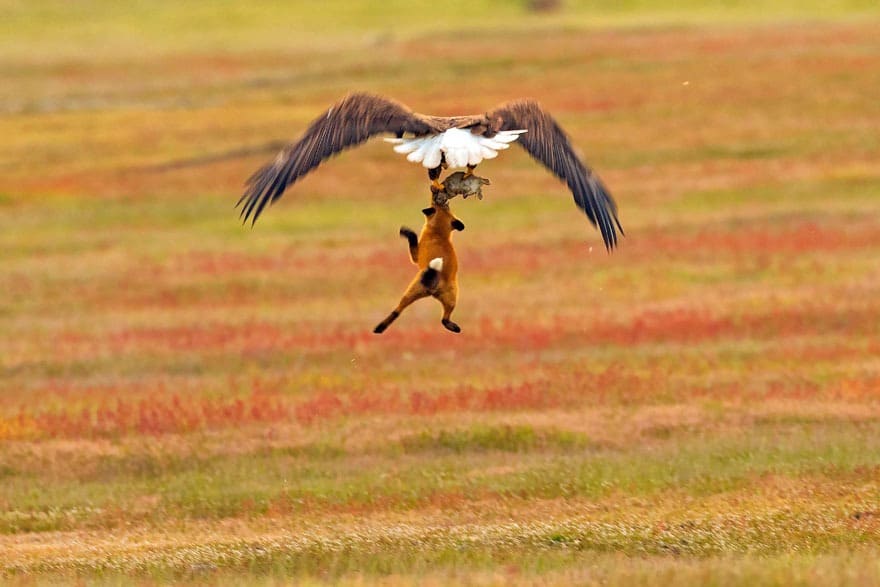 Image source: Kevin Ebi
Image source: Kevin Ebi
 Image source: Kevin Ebi
Image source: Kevin Ebi
 Image source: Kevin Ebi
Image source: Kevin Ebi
-

 GARDEN10 tháng ago
GARDEN10 tháng ago4 Easiest Ways to Get Free Plants
-

 ANIMALS10 tháng ago
ANIMALS10 tháng agoBritish Angler Caught Huge 67-Pound Goldfish in the World
-

 FUNNY10 tháng ago
FUNNY10 tháng ago30 Weirdest Things That People Came Across On The Subway
-

 FUNNY10 tháng ago
FUNNY10 tháng ago30 Funny and Perplexing Photos That Make You Laugh All Day
-

 GARDEN9 tháng ago
GARDEN9 tháng ago30 Shimmering Side Yard Landscape Ideas
-

 ANIMALS10 tháng ago
ANIMALS10 tháng agoKindhearted Driver Rescues Skinny Dog Hiding Near Highway Thanks to His Eagle Eye
-

 FUNNY10 tháng ago
FUNNY10 tháng ago22 Design Fails That Will Make You Laugh Out Loud
-

 ANIMALS10 tháng ago
ANIMALS10 tháng agoMore Than 3 Million People Baffled by Video of Strange Figure on the Beach





